
The American Diabetes Association recognizes seven distinct meal patterns that have been scientifically proven to help manage diabetes, and understanding which one aligns with your body’s natural rhythms can make all the difference in your prediabetes journey. Here’s what most people don’t realize: when you eat matters just as much as what you eat.
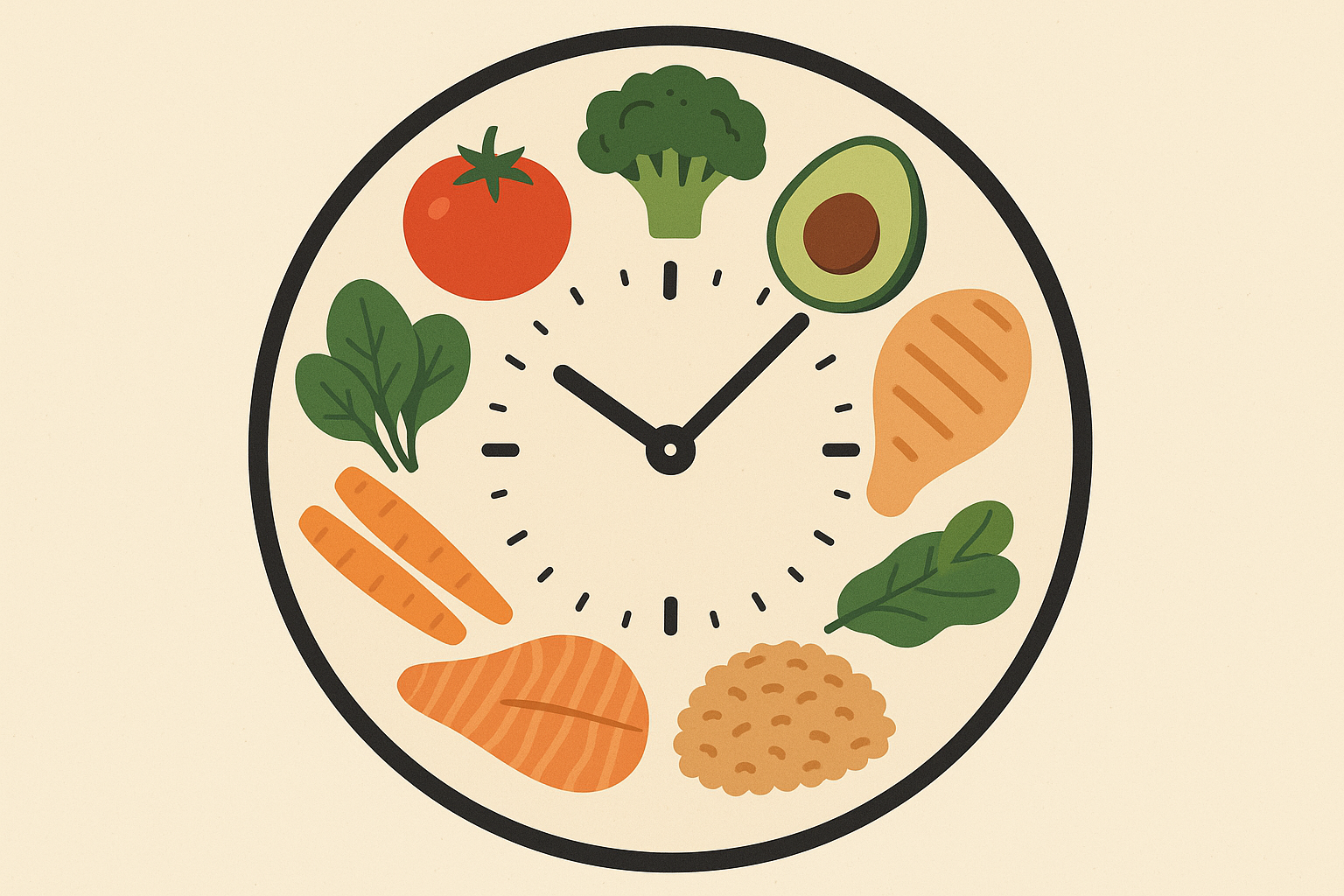
I spent months obsessing over carb counts and portion sizes before discovering that my meal timing was sabotaging everything. My glucose readings were all over the place until I started paying attention to my body’s internal clock. Now I understand why that “perfect” breakfast worked great at 7 AM but sent my blood sugar soaring when I ate it at 10 AM during weekend brunches. Talk about frustrating.
Table of Contents
- When You Eat Matters More Than What You Eat: The Circadian Revolution
- Why Your Body Responds Differently Than Mine: Personal Glucose Mapping
- Food Combinations That Actually Work Better Together
- Making This Work in Real Life Without Losing Your Mind
TL;DR
- Whether you’re a morning person or night owl determines when you should eat your biggest meals for better blood sugar control
- The same food can affect your glucose totally differently than it affects mine – testing is everything
- Eating fiber first, then protein, then carbs can help reduce glucose spikes
- Some foods just work better together and create benefits beyond what each would do alone
- Building tiny meal prep habits onto things you already do works better than willpower
- Stress and sleep quality change how your body handles the exact same meals
When You Eat Matters More Than What You Eat: The Circadian Revolution
Most prediabetes meal plans obsess over carb counting while completely ignoring your body’s internal clock. Here’s what I’ve discovered: aligning meal timing with your natural rhythms can dramatically improve how your body handles sugar – sometimes more than changing what you eat entirely.
Your body literally processes the same meal differently at 7 AM versus 7 PM. Working with these natural patterns instead of against them transforms how effectively your 30-day meal plan for prediabetes works. I learned this the hard way after forcing myself into “healthy” eating schedules that fought against my natural rhythms for months.
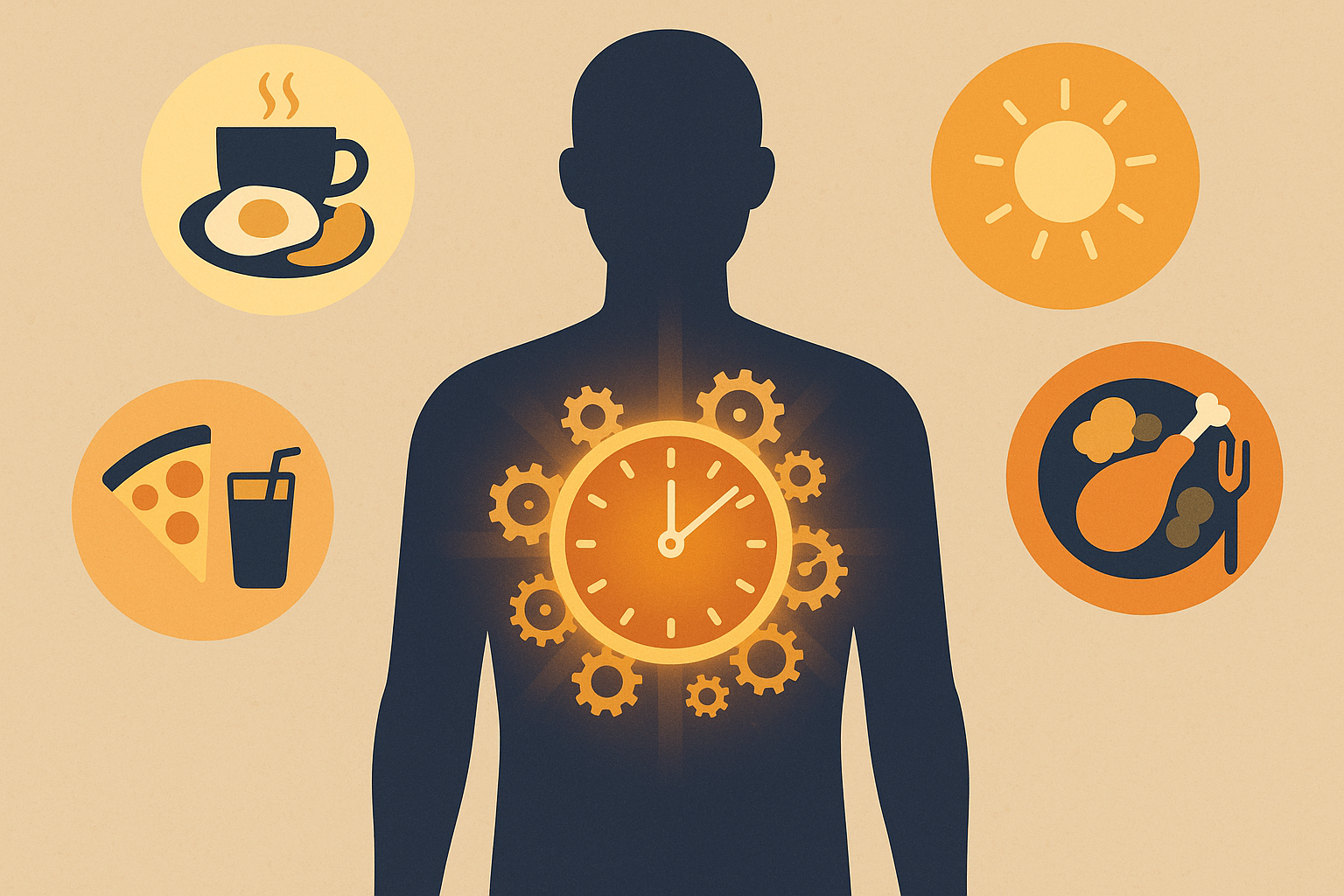
Understanding your body’s natural rhythms becomes even more crucial when you consider how intermittent fasting affects women differently than men, making personalized timing strategies essential for optimal glucose control.
Your Chronotype Determines Your Optimal Eating Windows
Whether you’re naturally a morning lark or night owl isn’t just about sleep preferences – it’s genetic programming that affects when your body best handles glucose. Research shows that giving your body two to three hours between meals allows your blood glucose to lower to a desirable level before you eat your next meal, making meal timing just as crucial as meal composition.
Understanding your chronotype and building meal timing around it creates a personalized framework that actually works with your biology instead of against it. I wish someone had told me this before I spent six months trying to force myself into a 6 AM breakfast routine when my body naturally wanted to eat at 9 AM.
Morning People: Front-Load Your Calories for Maximum Impact
If you naturally wake up energized and fade by evening, your body handles glucose better with larger morning meals. I’m talking about getting around 40% of your daily calories between 6-9 AM. This timing works with your natural cortisol awakening response, which primes your body to handle insulin better.
I’ve seen people completely transform their blood sugar patterns just by shifting when they eat their biggest meal, not what they eat. Take Sarah – she’s a natural early riser who struggled with afternoon energy crashes and evening glucose spikes. After shifting most of her daily calories to a protein-rich breakfast eaten by 8 AM, her continuous glucose monitor showed much more stable readings within just one week.
How to make this work:
- Take the Munich Chronotype Questionnaire to confirm you’re actually a morning person
- Have your largest meal within 2 hours of when you naturally wake up
- Include 25-30g protein and some complex carbs during this window
- Track your fasting glucose for a week to see if this helps
For morning people looking to optimize their breakfast routine, learning how to prepare nutrient-dense oatmeal properly can provide the perfect foundation for glucose-stable mornings.
Night Owls: Later Windows Work, But Mind the Cutoff
If you’re a night owl, you can eat later than conventional wisdom suggests, but there’s one crucial rule – stop eating at least 3 hours before bed. This prevents your blood sugar from spiking while you sleep, which messes with sleep quality and makes your morning insulin sensitivity worse.
This isn’t about restriction; it’s about timing your last meal when your body can actually process it instead of just storing it while you sleep.
How to make this work:
- Figure out your natural bedtime and subtract 3 hours – that’s your eating cutoff
- Still try to get 60% of your daily calories before 4 PM, regardless of chronotype
- Use herbal teas with cinnamon for evening cravings
- Track your sleep quality alongside glucose readings if you have a continuous glucose monitor
| Your Type | When to Eat | Biggest Meal | Evening Cutoff |
|---|---|---|---|
| Morning Person (25% of people) | 6 AM – 6 PM | 6-9 AM | 3 hours before bed |
| Night Owl (25% of people) | 10 AM – 8 PM | 11 AM – 2 PM | 3 hours before bed |
| Somewhere in Between (50% of people) | 8 AM – 7 PM | 8 AM – 12 PM | 3 hours before bed |
Mix Things Up So Your Body Doesn’t Get Bored
Here’s the thing – your body gets smart. After about 10 days of the same routine, it adapts and the benefits start to plateau. Mixing up your nutrition throughout the 30-day period keeps your cells responding well and prevents that frustrating stall I experienced after two weeks of initial improvements.
Think of it like cross-training for your metabolism – different phases target different aspects of blood sugar control.
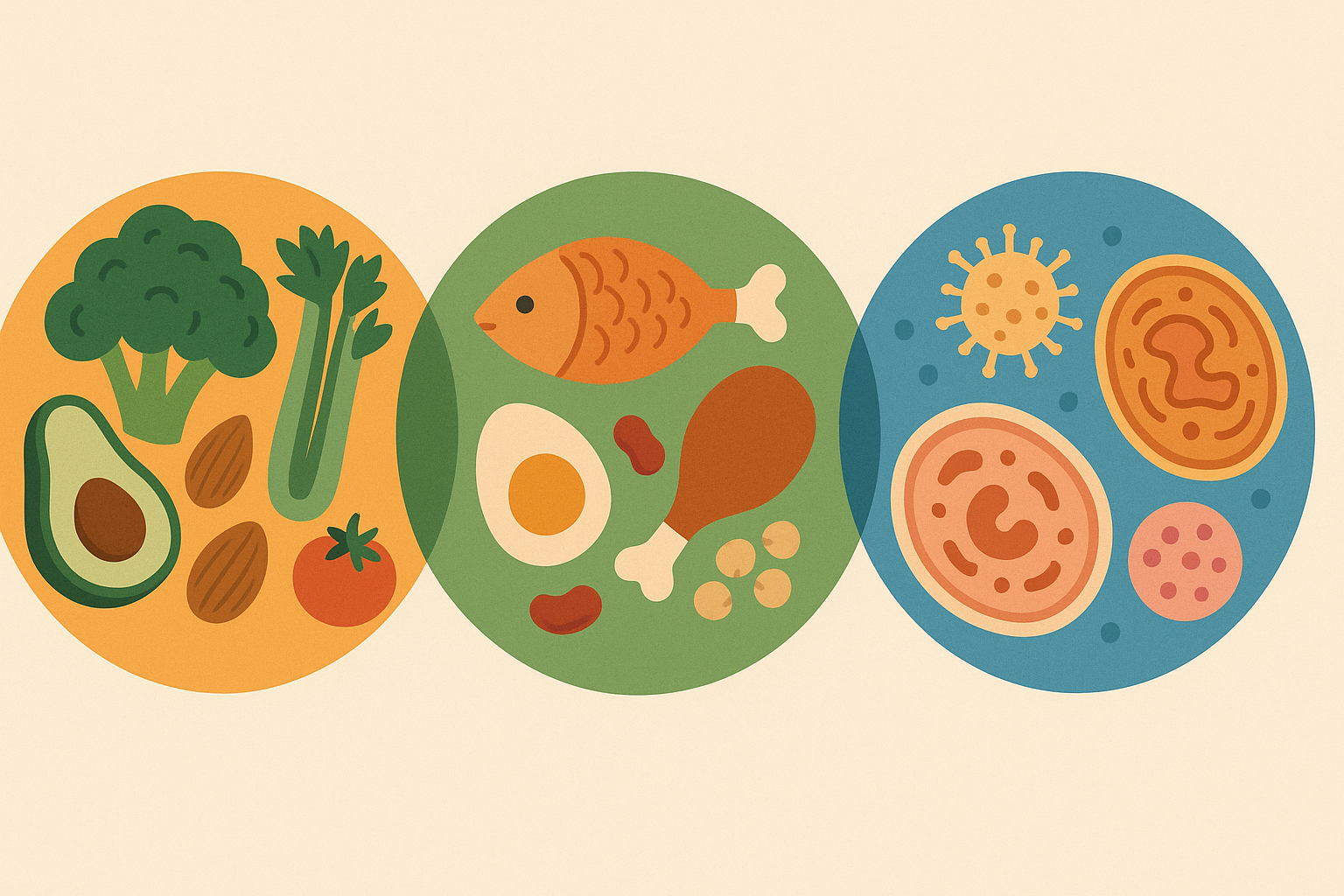
Week 1-7: Get Your Cells Ready
The first week focuses on foods that help your cellular energy factories work better – things rich in CoQ10, alpha-lipoic acid, and magnesium. Think of these nutrients as tune-up tools for your cells’ engines. When your cells work better, they handle sugar better. This builds the foundation that makes everything else work.
Week 8-21: Cool Down the Fire
Weeks two and three emphasize foods that reduce chronic inflammation – omega-3s, colorful berries, and cruciferous vegetables. Inflammation acts like static interference in your body’s blood sugar regulation system. Clear the interference, and the system works way better.
During this phase, incorporating sulforaphane-rich broccoli and cruciferous vegetables becomes particularly important for supporting your body’s natural detoxification processes.
Week 22-30: Train Your Body to Be Flexible
The final phase introduces some strategic variety in carbs and maybe some intermittent fasting to train your body to efficiently switch between burning glucose and fat. This metabolic flexibility is what separates people who maintain their improvements long-term from those who see results disappear after the 30 days end.
The Order You Eat Foods Changes Everything
I was shocked to learn that the sequence in which you eat foods within each meal can change how your gut bacteria respond and how much your glucose spikes. This isn’t some fringe theory – research shows that eating fiber first can reduce glucose spikes by up to 30% from the exact same foods.
Simple meal order that works:
- Start with some fiber (berries, vegetables, chia seeds)
- Wait 10-15 minutes if you can (sometimes I remember, sometimes I don’t)
- Add your protein and healthy fats
- Wait another 10 minutes if possible
- Finish with your carbs
- Drink water throughout, not just with the meal
Start Every Meal With Fiber
Beginning meals with fiber creates a protective barrier in your intestine that slows down glucose absorption while feeding the good bacteria that help regulate blood sugar naturally. I think of it as creating a speed bump for glucose – same destination, gentler journey.
The importance of fiber extends beyond blood sugar control, as research shows dietary fiber is actually the most crucial macronutrient for overall metabolic health and longevity.
Wait a Bit, Then Add Protein and Fat
Having healthy fats with protein about 10-15 minutes before carbs triggers hormones that improve insulin sensitivity and help you feel satisfied longer. This timing isn’t random – it’s based on how long it takes these nutrients to signal your digestive system to get ready for incoming carbohydrates.
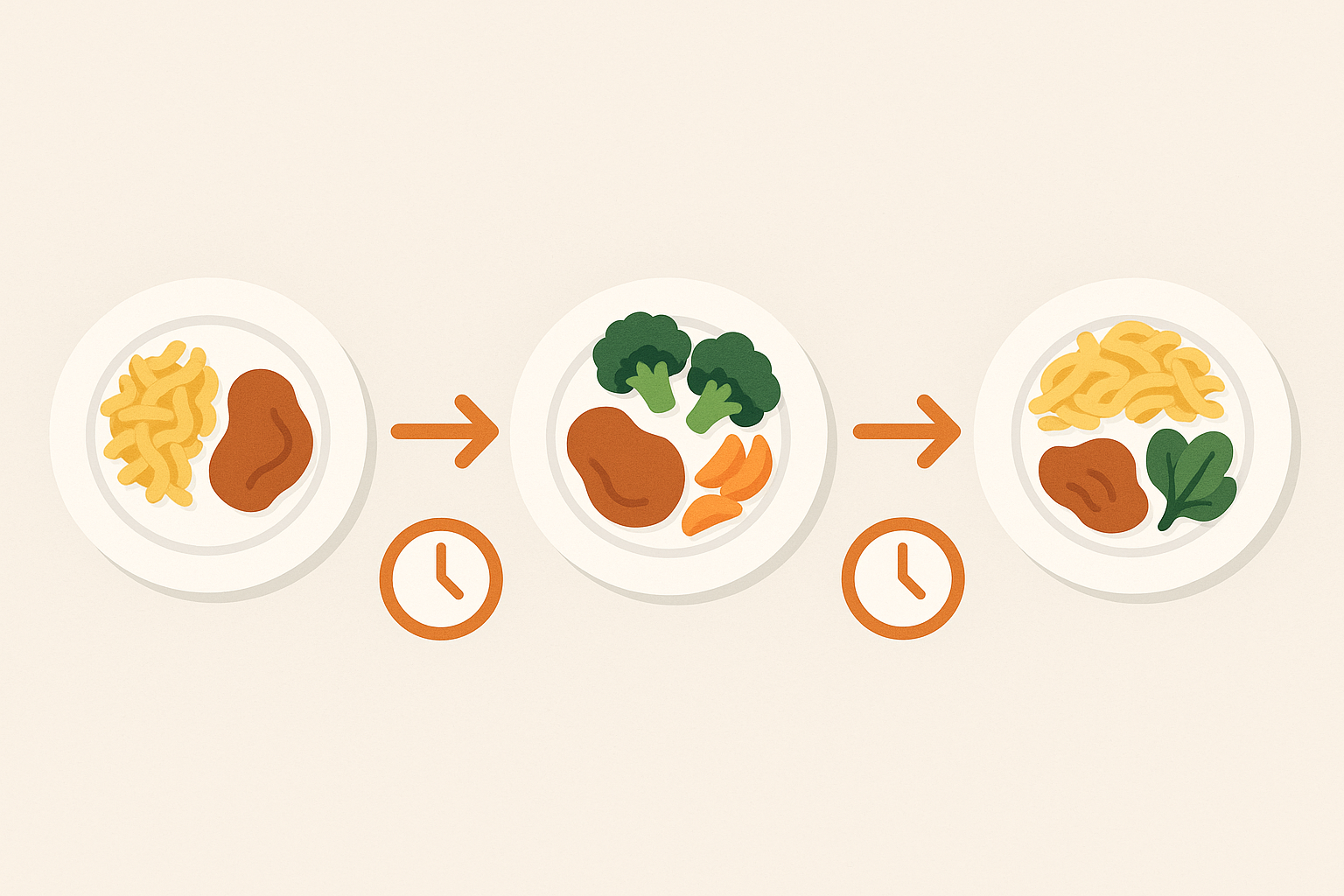
Why Your Body Responds Differently Than Mine: Personal Glucose Mapping
Here’s what the generic meal plans won’t tell you: individual responses to identical foods can vary by up to 400%. That “healthy” oatmeal that works great for your friend might spike your glucose higher than a candy bar would.
Data from continuous glucose monitors has revealed that personalized meal planning isn’t just helpful – it’s essential. Creating your unique “glucose fingerprint” through systematic testing lets you plan meals that actually work with your specific body, not some theoretical average person.
Create Your Personal Food Response Database
Building your glucose fingerprint requires testing individual foods while monitoring how your body responds. This isn’t about obsessive tracking forever – it’s about gathering intelligence during your 30-day plan that helps you make better choices for life.
Once you know your personal “glucose villains” and “glucose heroes,” meal planning becomes infinitely easier. The Diabetes Plate method can help create perfectly portioned meals with a healthy balance of non-starchy vegetables, protein, and quality carbohydrates—without any counting, calculating, weighing, or measuring, making it an ideal framework for systematic food testing.
The 14-Day Single Food Testing Protocol
Testing one new food every two days in isolation reveals your personal glucose response patterns that may be totally different from standard recommendations. I’ve seen people discover that supposedly “healthy” foods like quinoa or sweet potatoes spike their glucose terribly, while others find they can handle white rice just fine. Your body’s responses are as unique as your fingerprint.
How to test foods systematically:
- Get a continuous glucose monitor (CGM) or commit to testing 8 times daily with finger sticks
- Test one new food every 2 days in isolation (same time, same portion)
- Check glucose before eating, then at 30, 60, 90, and 120 minutes after
- Note how you feel – energy levels, mood, cravings
- Create your own traffic light system: green (minimal spike), yellow (moderate), red (avoid)
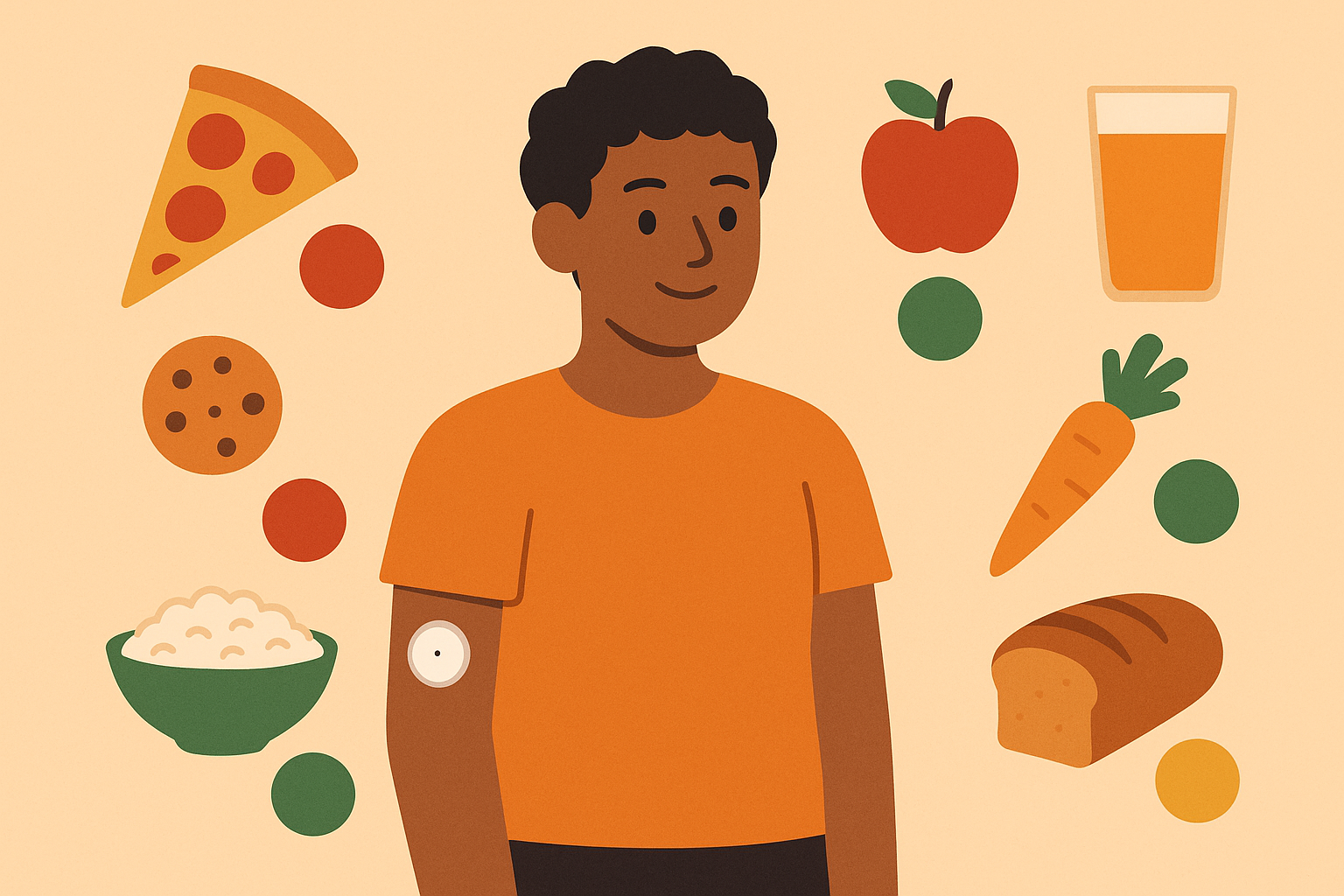
Mike discovered through his testing that steel-cut oats (considered super healthy) spiked his glucose to 180 mg/dL, while white rice with vinegar only raised it to 140 mg/dL. This completely changed his breakfast routine and improved his daily glucose control.
When testing different carbohydrate sources, understanding how to determine your personal carb tolerance provides valuable context for interpreting your glucose response data.
Your Stress Levels Change Everything
Your glucose response to identical meals changes dramatically based on stress levels, sleep quality, and hormonal fluctuations. When I’m stressed about a work deadline, even my usual oatmeal sends my blood sugar through the roof. A food that’s perfectly fine on a calm Tuesday might spike your glucose on a stressful Monday.
How to account for life happening:
- Rate your stress levels 1-10 before meals during your testing phase
- Track how many hours you slept and how well you slept
- Note menstrual cycle phase if you’re a woman – estrogen affects insulin sensitivity
- Develop “high stress day” and “low stress day” meal alternatives
- Have backup meal options ready for nights when sleep was terrible
Real Life Happens: Building Flexibility Into Your Plan
The most perfect meal plan in the world is useless if it falls apart the moment you have dinner with friends or travel for work. Real-world meal planning must account for social situations, travel, and all the environmental factors that can derail rigid approaches.
The goal isn’t perfection – it’s maintaining improvements while allowing for the flexibility that makes this sustainable long-term.
The 80/20 Rule That Actually Works
You can maintain your metabolic improvements while still having social flexibility if you plan strategically for “off-plan” meals. This isn’t about guilt or cheating – it’s about having a game plan that lets you enjoy life while protecting your progress.
Travel and Schedule Chaos Protocols
Having pre-planned strategies for maintaining blood sugar stability during irregular schedules, different time zones, and limited food access can mean the difference between maintaining your progress and starting over. I learned that having these protocols ready before you need them is crucial – you can’t make good decisions when you’re already stressed and hungry in an airport.
Travel emergency kit:
- Protein powder packets (plant-based travels better)
- Nuts and seeds in small containers
- Fiber supplements or psyllium husk packets
- Cinnamon capsules for blood sugar support
- Herbal tea bags for hydration and stress
- CGM supplies and backup if you use one
- List of chain restaurants with safe options you’ve already tested
Food Combinations That Actually Work Better Together
Beyond individual nutrients, some foods just work better together and create benefits that are greater than what each would do alone. This is where meal planning gets exciting – instead of just avoiding “bad” foods, you’re actively creating combinations that help your body’s natural glucose regulation systems work better.
These aren’t random pairings; they’re based on how different compounds interact at the cellular level to improve insulin sensitivity and reduce post-meal glucose spikes.
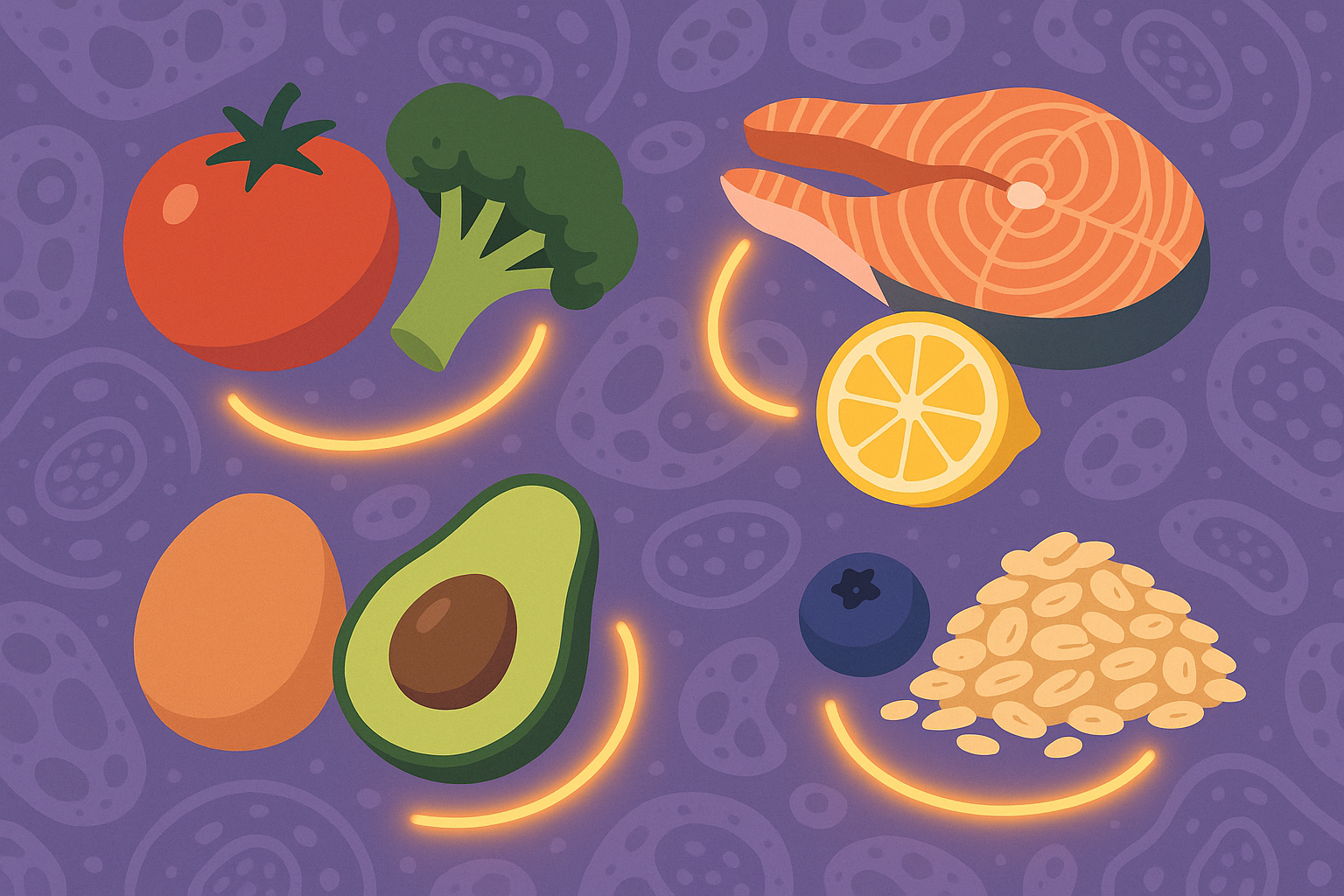
Smart Food Pairings That Multiply Benefits
Pairing certain foods with specific minerals creates combinations that enhance insulin sensitivity and reduce post-meal glucose spikes more effectively than either component alone. Think of it like how peanut butter makes apples more satisfying, but for blood sugar control.
Green Tea + Chromium-Rich Foods = Better Glucose Control
Having chromium-rich foods (broccoli, whole grains) with green tea can reduce post-meal glucose response by up to 30%. The chromium helps your body use the beneficial compounds in green tea better, while the green tea helps your body absorb the chromium – it’s a perfect partnership.
I started drinking green tea with my broccoli-heavy lunches and noticed my afternoon glucose readings stayed remarkably stable compared to when I had either component alone.
Cinnamon + Magnesium = Enhanced Cell Function
Pairing Ceylon cinnamon with magnesium-rich foods (dark leafy greens, nuts, seeds) helps glucose get into your cells more efficiently while making sure the cellular machinery works properly.
Natural Berberine + Prebiotic Fiber = Gut-Glucose Connection
Foods naturally containing berberine compounds (goldenseal, Oregon grape root) combined with prebiotic fibers create an environment that promotes beneficial gut bacteria while regulating glucose metabolism. This combination works on multiple levels – improving gut health while directly supporting glucose regulation.
| Primary Food | Partner Food | How It Works | What You Might Notice |
|---|---|---|---|
| Green Tea | Broccoli | Better absorption of both | More stable afternoon energy |
| Ceylon Cinnamon | Spinach | Improved cellular uptake | Less post-meal sluggishness |
| Blueberries | Greek Yogurt | Gut-brain support | Reduced inflammation feelings |
| Turmeric | Black Pepper | Enhanced absorption | Better recovery from workouts |
| Apple Cider Vinegar | Olive Oil | Slower glucose absorption | Less dramatic blood sugar swings |
Protein Timing and Quality That Actually Matters
The type, timing, and amino acid profile of proteins dramatically influences satiety hormones, muscle maintenance, and glucose regulation throughout the day. According to the American Diabetes Association, a low-carbohydrate eating pattern reduces carbohydrates to 26–45% of total calories, which means protein becomes crucial for filling the caloric gap while maintaining stable blood sugar levels.
Understanding how to strategically use different protein sources can significantly improve your results during the 30-day plan and beyond.
Mix Up Your Protein Sources
Strategic alternation between complete animal proteins and complementary plant protein combinations ensures you’re getting all essential amino acids while feeding different beneficial bacteria strains that support glucose metabolism. You don’t need to be perfect about this – just mix it up throughout the week.
Hit Your Muscle-Building Threshold at Every Meal
Ensuring each meal contains about 2.5-3g of leucine (the amino acid that triggers muscle protein synthesis) helps maintain your metabolic rate and glucose disposal capacity. Muscle tissue is your body’s largest glucose disposal system – maintaining it during weight loss is crucial for long-term success.
Jennifer discovered that adding 1 tablespoon of hemp seeds to her morning smoothie improved her satiety until lunch and reduced her post-breakfast glucose spike by 15% compared to her previous protein powder routine.
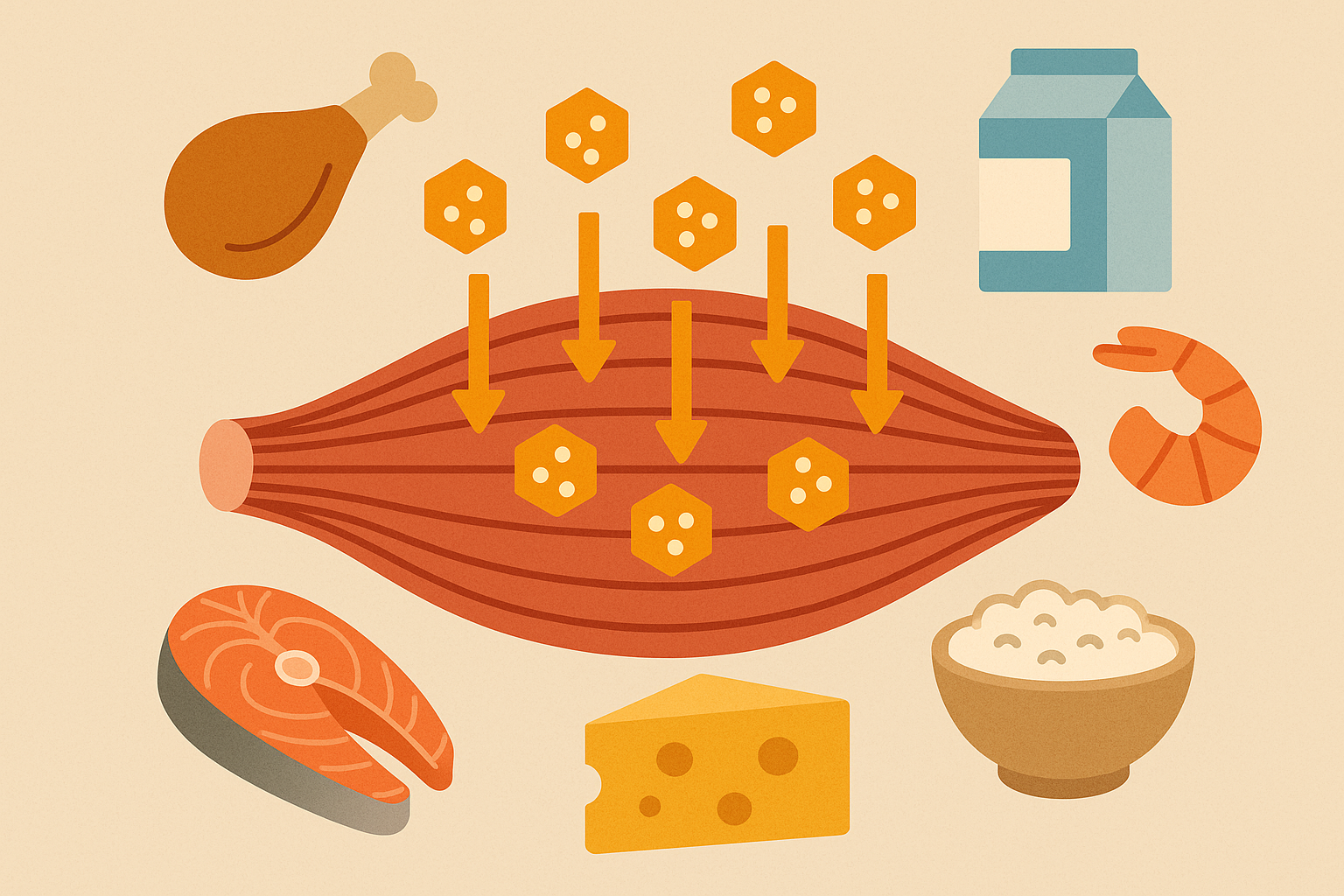
Making This Work in Real Life Without Losing Your Mind
The most scientifically perfect plan fails if it’s too complicated to follow or requires completely overhauling your life. This section focuses on making these strategies practical and sustainable by working with your existing habits and psychology rather than against them.
I wish I’d learned this before spending months trying to force myself into elaborate routines that lasted exactly three weeks.
Habit Stacking and Meal Prep Psychology
Instead of trying to build entirely new routines from scratch, attach small meal planning actions to habits you already do automatically. This works because it uses your brain’s existing neural pathways rather than trying to create completely new ones.
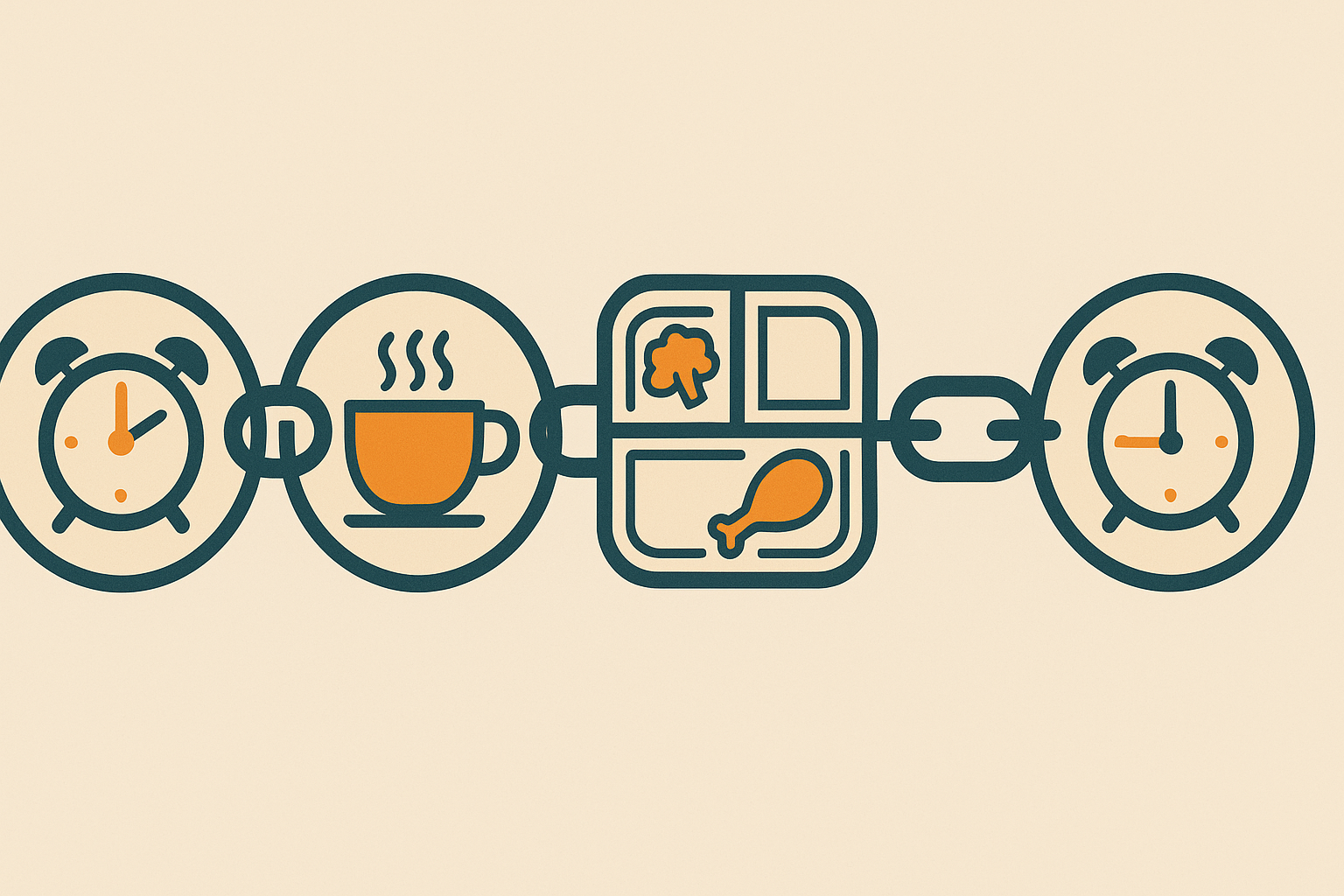
Start Ridiculously Small: The 2-Minute Rule
Start with meal planning changes so small that it feels almost silly not to do them. This builds consistency, which builds confidence, which builds bigger changes over time. The key is momentum, not perfection.
How to build sustainable habits:
- Pick your strongest existing daily habit (coffee, brushing teeth, checking phone)
- Stack one tiny meal prep action right after this habit
- Start with 2-minute actions: portioning nuts, washing berries, preparing herbal tea
- Gradually expand the habit as it becomes automatic
- Track consistency rather than perfection to maintain motivation
Reduce Decision Fatigue Before It Kills Your Progress
Every food decision you have to make during the day uses mental energy. The goal is to automate as many of these decisions as possible so you can save your willpower for when you really need it.
Simple weekly meal prep approach:
- Sunday: Batch cook 3 protein sources for the week
- Monday: Prep vegetables for 3 days (wash, chop, portion)
- Wednesday: Mid-week vegetable refresh and snack portioning
- Friday: Plan weekend meals and prep emergency snacks
- Daily: 5-minute morning assembly of pre-prepped components
Design Your Environment for Automatic Success
Your environment shapes your choices more than you realize – make it work for you instead of against it. Small changes to your physical space can be more effective than trying to change your behavior through willpower alone.

When you’re ready to take your prediabetes management to the next level, Organic Authority’s carefully curated wellness products can support your journey with high-quality supplements and tools that complement this personalized approach. Their rigorous evaluation process ensures you’re getting products that actually work, not just marketing hype – because your health deserves the same attention to detail you’re putting into your meal planning.
Final Thoughts
This isn’t just another 30-day meal plan – it’s a complete shift in how you think about managing prediabetes. Instead of fighting against your body’s natural rhythms and individual responses, you’re learning to work with them.
Look, this isn’t magic. Some days will be better than others. The goal isn’t perfect blood sugar – it’s feeling better and worrying less about food. If you can do that even 60% of the time, you’re winning.
The circadian timing, personal glucose mapping, strategic food combinations, and lifestyle integration create a comprehensive approach that addresses the root causes of glucose issues rather than just managing symptoms. Most importantly, this approach teaches you how to become the expert on your own body’s responses, giving you the tools to maintain and build on your progress long after the initial 30 days.
Your prediabetes diagnosis doesn’t have to define your relationship with food; it can be the catalyst for developing a more intuitive, personalized, and sustainable approach to eating that serves you for decades to come. Some weeks you’ll nail it, some weeks you’ll survive on sandwiches. Both are fine – the key is learning what works for your unique body and building from there.

